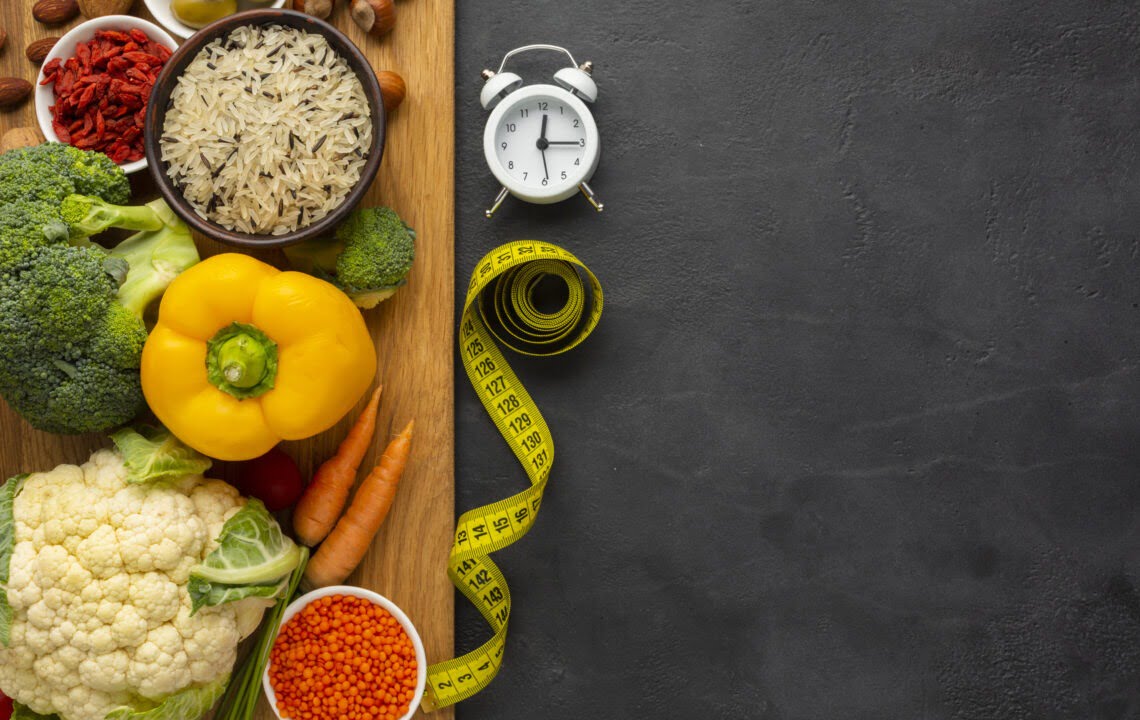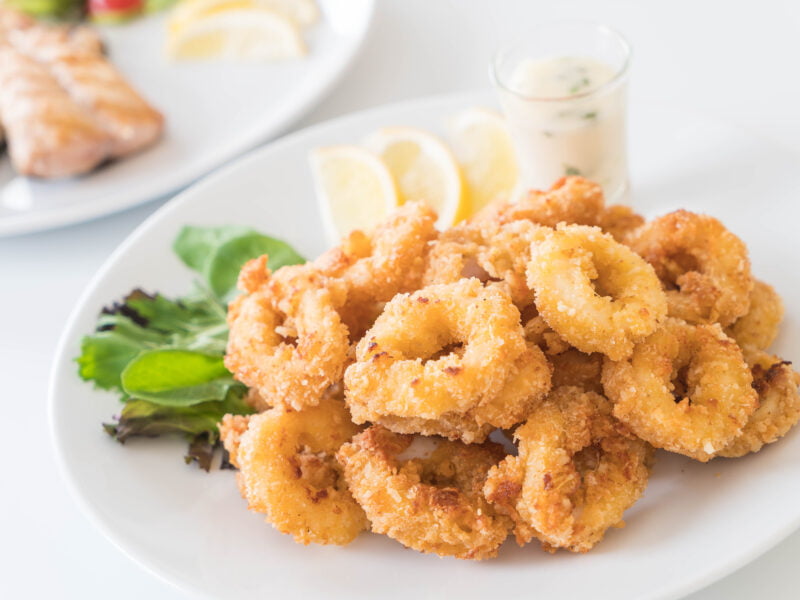Want to feel the rush and pride of going from XXL to XL or even L?
Who doesn’t want to get in shape, today? With the monotonous and sedentary lifestyle nowadays, weight gain is as common as air. Everybody wants to shed some pounds, but how many actually have the time and devotion to go to the gym or stick to a workout routine? Not many.
But following a diet is easy, it just needs a little lifestyle change, that too gradually. Speaking of diet, one dieting method is intermittent fasting. It’s an eating pattern that alternates between periods of eating and fasting, making it simpler to follow than other dieting methods that focus on “what to eat”.
With intermittent fasting, the focus is on when to eat. If you’re new to intermittent fasting or looking for a structured plan, we are here with a free 7-day meal plan for intermittent fasting
What is Intermittent Fasting?
Intermittent fasting is a way of eating that switches between times when you eat and times when you don’t eat. It doesn’t tell you what foods to eat and which to avoid but instead focuses on when you should eat them. Here are a few ways in which you can follow intermittent fasting:
The 16/8 Method
This is the most popular way. You fast for 16 hours and then eat during an 8-hour window. For example, you might eat from 12 PM to 8 PM and then not eat anything from 8 PM to 12 PM the next day.
The 5:2 Method
In this method, you eat normally for five days of the week. On the other two days, you eat very little, like just a small snack, or fast completely.
The 24-Hour Fast
This way involves fasting for a whole day, from dinner one day to dinner the next day. Some people do this once or twice a week.
Why It Works
Scientists have found that intermittent fasting can help people lose weight and get healthier. Intermittent fasting is flexible. You can choose the method that works best for your schedule and lifestyle, making it easier to stick with it for a long time. This flexibility is the reason many people find it a good option for staying healthy.
Benefits of Intermittent Fasting
An intermittent fasting diet alongside a dedicated workout plan can offer benefits that go beyond weight loss, as explained below:
Weight Loss and Fat Loss
Intermittent fasting with no Celsius consumption helps you eat fewer calories and boosts your metabolism slightly. Intermittent fasting can result in a 3-8% reduction in body weight over a period of 3-24 weeks while also reducing the extra inches off your waist.
Reduced Insulin Levels
Fasting improves various metabolic markers, such as insulin sensitivity. It can reduce insulin levels by 20-31% and blood sugar by 3-6% in prediabetic individuals. Lower insulin levels facilitate fat burning and help prevent type 2 diabetes.
Heart Health
Intermittent fasting can reduce the risk of heart disease. It could reduce LDL cholesterol, blood triglycerides, inflammatory markers, blood sugar, and insulin resistance.
Brain Health
Intermittent fasting increases the brain hormone BDNF and may support the growth of new nerve cells. It also protects against damage from oxidative stress and inflammation. It was also found that intermittent fasting could delay the onset and progression of neurodegenerative diseases like Alzheimer’s and Parkinson’s.
Reduced Inflammation
Intermittent fasting can reduce inflammation in the body. Chronic inflammation is linked to many diseases, including heart disease, cancer, and Alzheimer’s.
7-day Meal Plan for Intermittent Fasting
Fasting Window: 8 PM – 12 PM
Eating Window: 12 PM – 8 PM
Monday
- Meal 1: Scrambled eggs (3) with spinach (1 cup), avocado (1/2), and whole grain toast (2 slices).
- Snack: Greek yogurt (1 cup) with mixed berries (1/2 cup) and a drizzle of honey.
- Meal 2: Grilled chicken breast (6 oz) with quinoa (1 cup cooked) and steamed broccoli (1 cup).
- Snack: Apple slices (1 medium apple) with almond butter (2 tbsp).
Tuesday
- Meal 1: Oatmeal (1 cup cooked) topped with banana slices (1), chia seeds (1 tbsp), and almond butter (1 tbsp).
- Snack: Carrot sticks (1 cup) and hummus (1/4 cup).
- Meal 2: Baked salmon (6 oz) with sweet potato (1 medium, baked) and asparagus (1 cup).
- Snack: Cottage cheese (1/2 cup) with pineapple chunks (1/2 cup).
Wednesday
- Meal 1: Whole grain toast (2 slices) with mashed avocado (1/2) and poached eggs (2), sprinkled with chili flakes.
- Snack: A handful of mixed nuts and seeds (1/4 cup).
- Meal 2: Stir-fried tofu (1 cup) with mixed vegetables (2 cups) and brown rice (1 cup cooked).
- Snack: Blueberries (1/2 cup) with a few almonds (10-12).
Thursday
- Meal 1: Smoothie made with spinach (1 cup), banana (1), protein powder (1 scoop), and almond milk (1 cup).
- Snack: Celery sticks (1 cup) with peanut butter (2 tbsp).
- Meal 2: Turkey burger (6 oz) wrapped in lettuce with sweet potato fries (1 medium sweet potato).
- Snack: A small piece of dark chocolate (1 oz) with walnuts (1/4 cup).
Friday
- Meal 1: Chicken salad with mixed greens (2 cups), cherry tomatoes (1 cup), cucumbers (1/2 cup), and vinaigrette (2 tbsp).
- Snack: Sliced bell peppers (1 cup) with guacamole (1/4 cup).
- Meal 2: Shrimp stir-fry (6 oz shrimp) with quinoa (1 cup cooked) and mixed vegetables (2 cups).
- Snack: Apple slices (1 medium apple) with a few slices of cheese (2 oz).
Saturday
- Meal 1: Omelette with mushrooms (1/2 cup), tomatoes (1/2 cup), and feta cheese (1/4 cup).
- Snack: Greek yogurt (1 cup) with honey (1 tbsp) and granola (1/4 cup).
- Meal 2: Beef stir-fry (6 oz beef) with mixed vegetables (2 cups) and brown rice (1 cup cooked).
- Snack: Sliced strawberries (1 cup) with a dollop of cream (2 tbsp).
Sunday
- Meal 1: Smoothie bowl with berries (1/2 cup), banana (1), granola (1/4 cup), and a sprinkle of chia seeds (1 tbsp).
- Snack: Cherry tomatoes (1 cup) with mozzarella balls (1/4 cup).
- Meal 2: Grilled fish (6 oz) with couscous (1 cup cooked) and green beans (1 cup).
- Snack: A few squares of dark chocolate (1 oz) with raspberries (1/2 cup).
Tips To Begin Intermittent Fasting
Start Slowly
Begin with a shorter fasting window and gradually increase it. For example, start with a 12-hour fast and slowly work up to 16 hours. This gradual adjustment can make the transition easier and more sustainable.
Stay Hydrated
Drink plenty of water throughout the day, especially during fasting periods. Herbal teas and black coffee are also good options. Staying hydrated helps control hunger and keeps your body functioning optimally.
Eat Balanced Meals
Focus on whole, nutrient-dense foods. Include a mix of lean proteins, healthy fats, and plenty of vegetables in your meals. Balanced meals can keep you full longer and provide the necessary nutrients your body needs. Avoid processed foods and high-sugar snacks that can cause spikes in blood sugar levels.
Listen to Your Body
Pay attention to how you feel. If you experience dizziness, fatigue, or other adverse effects, adjust your fasting window or consult a healthcare professional. Your body will guide you on what works best.
Avoid Overeating
It’s tempting to eat more during your eating window. Plan your meals and snacks to ensure they are satisfying and nutritious, preventing overeating. Overeating can negate the benefits of intermittent fasting. Mindful eating, where you eat slowly and savor each bite, can help prevent overeating.
Wrapping Up
Intermittent fasting is a powerful tool for weight management and overall health improvement. This 7-day meal plan provides a balanced and varied approach to help you get started. Start with a method that fits your lifestyle, whether it’s the 16/8 method, the 5:2 method, or the 24-hour fast.
Stay hydrated and eat balanced meals to support your fasting periods. You can also try to find support from online communities or fasting buddies to share experiences and tips. And most importantly, exercise regularly and manage stress to enhance the benefits of intermittent fasting.
Intermittent fasting can be a sustainable and rewarding part of your lifestyle, helping you achieve your health and wellness goals.





